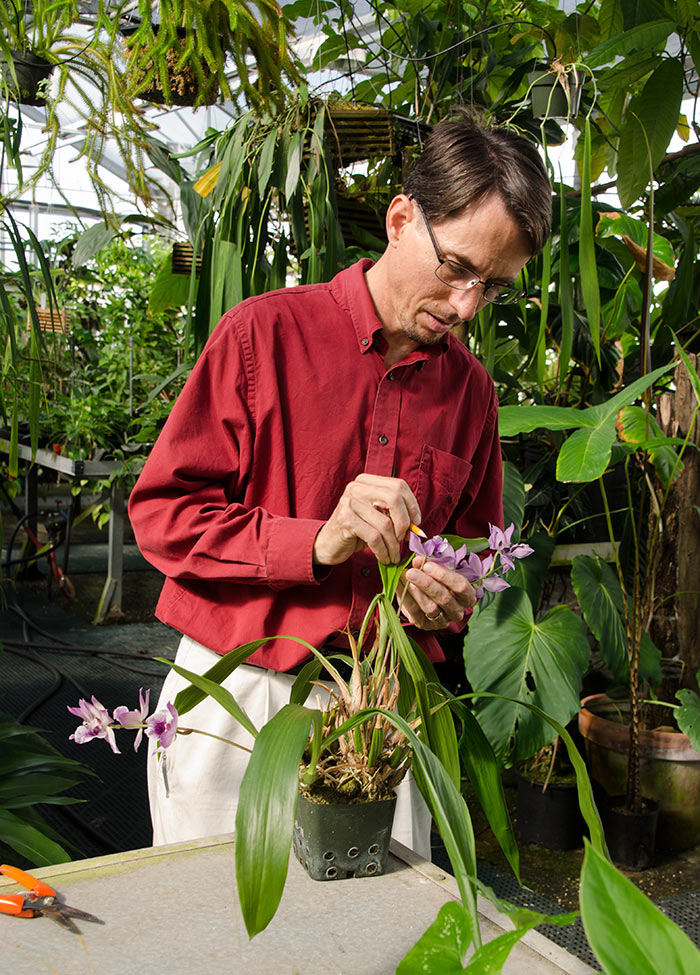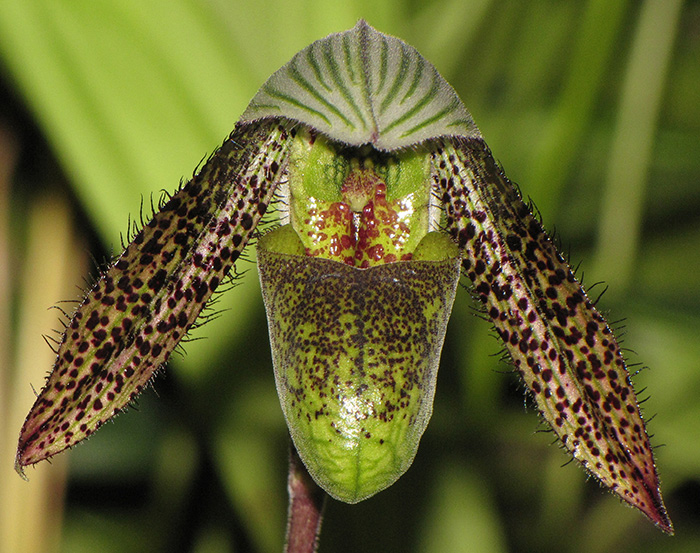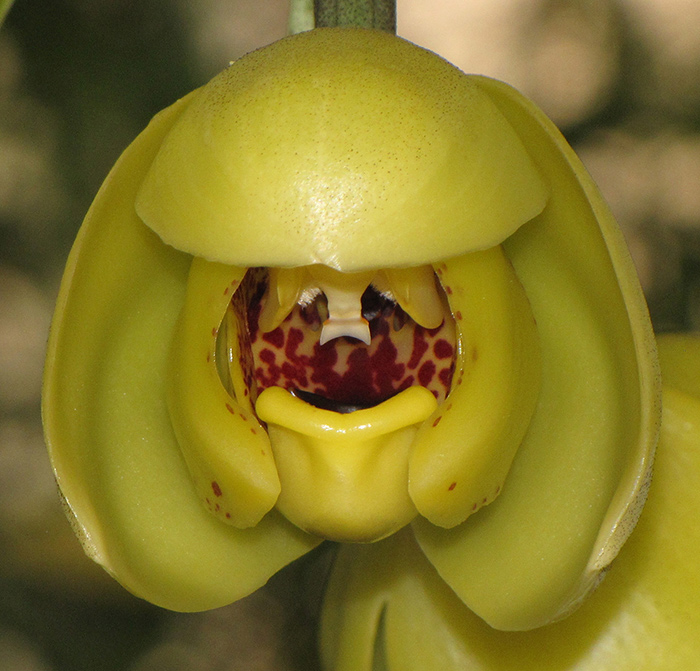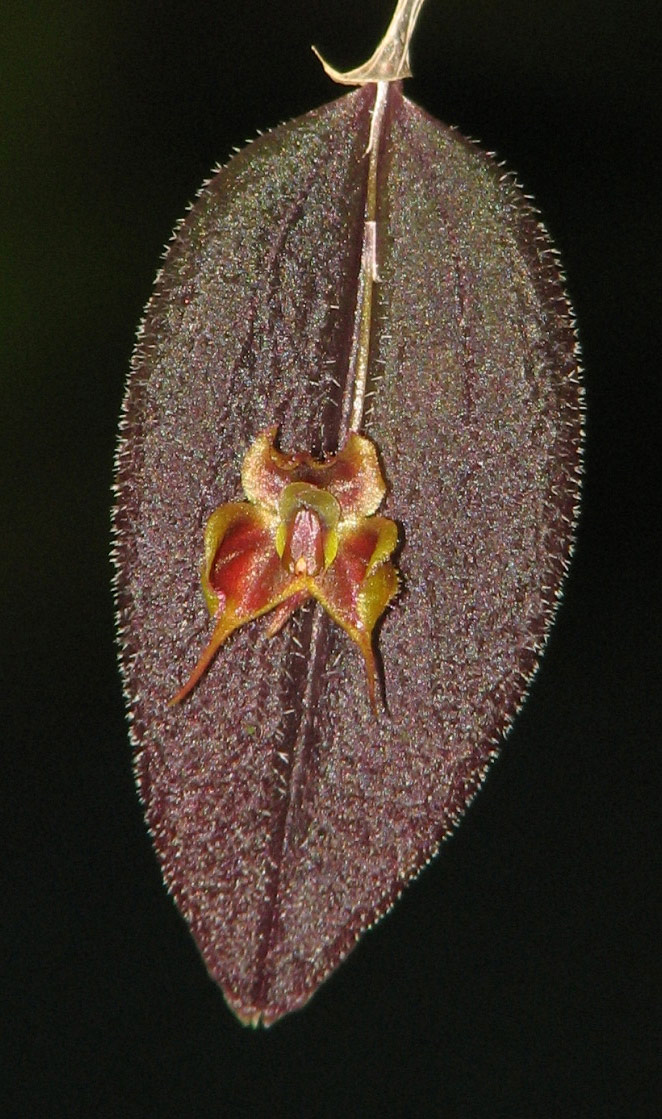The Huntington’s blog takes you behind the scenes for a scholarly view of the collections.
An Eclectic Collection of Orchids
Posted on Fri., Sept. 12, 2014 by

Dylan Hannon oversees The Huntington's tropical collections, which include thousands of orchids. Here, he inspects Zygonisia Cynosure 'Blue Birds' in one of the greenhouses. Photo by Lisa Blackburn.
In October, The Huntington will host the annual Southland Orchid Show and Sale. As in previous years, exhibitors will display orchids from around the world, a reflection of the passion among collectors for the vast and diverse Orchidaceae family. The event also reflects The Huntington's own dedication to orchids, plants that are well represented in our tropical collections.
How is an orchid collection assembled? When a plant family is so vast that it includes some 880 genera and more than 25,000 species, how are certain orchids chosen for the collections while others are not? Here, in brief, is some insight into these questions.

Paphiopedilum wardii. Photo by Dylan Hannon.
Prioritizing the development and content of the orchid collections at The Huntington means weighing institutional considerations such as educational, scientific, conservation, and display value against practical considerations like availability of plants and their amenability to growing conditions here. These limiting factors, combined with chance opportunity and curatorial preference, have resulted in an eclectic and dynamic assemblage of orchids over the years. The Huntington conserves one of the most significant orchid collections to be found among American botanical gardens today.
Approximately 900 orchid species and more than 2,000 unique hybrids currently are growing here in The Rose Hills Conservatory for Botanical Science and in our greenhouses. In both categories there are two main areas of focus: generalized, representative collections and more specialized, in-depth collections. The purpose of the first is to give visitors a glimpse of the staggering range of variation found in the orchids: the shapes, colors, sizes, and fragrances of their flowers as well as the expression of growth habits and leaf characters. This variability across the Orchidaceae family corresponds to the defining characteristics of different groups— subfamilies and tribes—of orchids: vandoid, angraecoid, and oncidioid orchids, among others. By carefully selecting from these groups, representative diversity can be presented without maintaining exhaustive collections of every group.

Acineta mireyae. Photo by Dylan Hannon.
In contrast, a specialized effort involves seeking a measure of diversity within some number of these groups. Examples of this approach would be the genera Paphiopedilum, Acineta, and Lepanthes in our case. These more narrowly themed collections allow us to exhibit the evolution of orchids where similarities are readily discernible. Such simultaneous specialized and generalized collecting is common to other areas of The Huntington’s living plant collections as well.
For display and education purposes, and sometimes for horticultural benefit, it is advantageous to display orchids in a naturalistic way, such as mounted in trees. (Many orchids in the wild grow on trees as epiphytes, plants that grow non-parasitically on other plants.) This context is important, yet it limits the number of orchids we can keep on public view. In the greenhouses that house the collections, many more orchid hybrids and species serve as a pool from which plants can be brought into the Conservatory on a permanent or temporary basis. A parallel can be drawn here to the treasures in Library collections, which are exhibited only a few at a time.

The tiny flower of Lepanthes fiskei measures less than 3/4" in length. Photo by Dylan Hannon.
Visitors to the Conservatory can thus enjoy a wide range of plants, especially orchids, that are shown on a changing basis. Some extraordinary specimens have been displayed there over the years, several of which are pictured in this article and in the accompanying photoset on The Huntington's Tumblr.
Mark your calendar for the annual Southland Orchid Show and Sale at The Huntington, coming up Oct. 17–19, 2014. A number of blooms from The Huntington's orchid collection will be among the entries. Hours on Friday are from noon to 4:30 p.m. and on the weekend from 10:30 a.m. to 4:30 p.m. The event will be held in the Brody Botanical Center and is included with general admission.
Dylan P. Hannon is curator of the Conservatory and tropical collections at The Huntington.